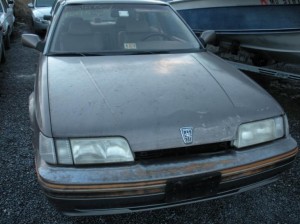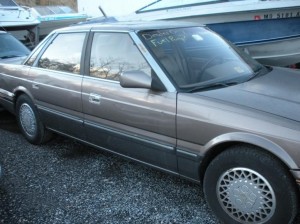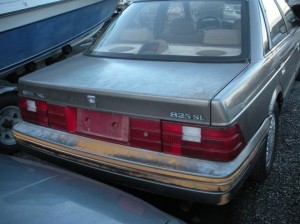Written By: Sam Andrews
Among the great things that happened in the decades after World War II was the opening of free trade. Countries once at war were now peacefully trading with each other. The Germans and Japanese, formerly part of a coalition of our enemies called the Axis powers, eventually used their naturally skilled peoples to build great consumer products, specifically automobiles, instead of weapons of war. Their superior products were made with great pride and sold very well. A lot of people benefited and prospered as a result and the world changed.
One of the lesser known and more unusual trade partnerships was between British and Japanese automakers. Formerly enemies in World War II, their respective auto companies Rover and Honda teamed up in the 1980s to produce just one vehicle, the Sterling 825/827 for the U.S. market.
Rover’s history in America was sparse and mixed before the Sterling. They had offered only two different vehicles in the previous 20 years, the 2000/3500 from the 1960s and the SD1 briefly from 1980-1981, during which only about 800 units were sold. Their cars, while appealing, had gained a poor reputation over time for reliability and rust issues.
Undeterred, Rover began work on a new flagship sedan shortly after their last offering was pulled from the U.S. market. This time, they teamed up with Honda to create the new sedan.
Honda was breaking through on the U.S. market in a big way. They were able to make durable, reliable, and economical cars that weren’t bad to drive, either. It’s easy to see why Rover would want to partner with them. But given Rover’s previous track record in the U.S., they thought it would be a good idea not to call the new Rover a ‘Rover’ at all. Instead, it was given the equally British-sounding name ‘Sterling’(as in the British currency, the pound sterling).
For Honda’s part, the Sterling was based on their new Legend. The Legend would actually debut in 1986 under Honda’s new North American luxury spin-off, Acura, and go on to be a very successful debut for both the model and the entire brand. In Europe, the Sterling would simply be sold under the Rover nameplate, without any identity crisis.
The U.S.-bound Sterling debuted in 1987 with the model designation “825”, which stood for the 2.5-litre 6-cylinder Honda engine under the hood (or “bonnet” as they say in England). Honda shipped the engine and transmissions to England, and Rover designed and crafted the bodies, which were then shipped to be sold in America.
It’s important to note that despite sharing elements with the Legend, the Sterling was of an entirely different, much more exotic tone. The Sterling is arguably better styled than its foundation, the Legend. The Sterling is more visually intriguing with sharper lines and angles, two-tone body colors, blackened a-pillars, and a plethora of red plastic for taillights. Inside, the interior is even better. The British were responsible for the cosmetic design and electrical engineering, so the interior is bathed in bolstered leather, wood trim, and hi-tech display gauges. It is warm, comfortable and inviting.
There was also a 5-door “fastback” version with a hatchback. In 1989, a 2.7-litre 6-cylinder engine replaced the 2.5, earning a new model name, the 827.
Unfortunately, Sterling never quite caught on here. Although there was no particular reason, the vehicle simply didn’t have enough going for it, especially in a crowded and competitive field of European sedans of the late 80s. From 1987-1992 only around 35,000 units were sold here. To this day, Rover has never offered another vehicle here since the Sterling.
Fortunately, for those Sterlings still on the road today, mechanical parts can easily be found thanks to the Honda components and widespread availability of them.



